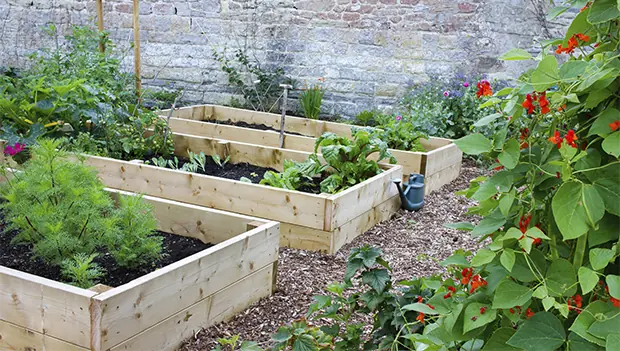
There's no better way to perpetuate the eating local, sustainable foods trend than by growing your own fruits, vegetables, herbs and beans—either in your own yard or at a community garden. Just like cooking from scratch at home, maintaining a fruitful, sustainable home garden provides a sense of empowerment because you're in complete control of what you'll consume. Not only do you know exactly where your food comes from, but you also control how it's grown (100 percent organic, without pesticides, for example).
If you're one of those people who claim to kill every plant that crosses your path, take heart: Initiating your own sustainable home garden doesn't have to be complicated, expensive or time-consuming. In fact, starting small is the key to success for beginning gardeners. The following tips will help you blossom from a timid first-timer into a full-fledged home gardener.
Nutrition Events Near You
Start Small With Square-Foot Gardening
If you have limited outdoor space, or big reservations about your abilities, begin with one or two potted tomato plants and hearty herbs like rosemary. When you're ready to tackle something more ambitious, Mel Bartholomew, author of All New Square Foot Gardening and founder of the Square Foot Gardening Foundation, recommends planting small beds in squares, not rows, and using a 12-inch by 12-inch grid system. He recommends that new gardeners pick a spot for the beds that doesn't puddle after rain that's free of tree roots and gets at least six to eight hours of sunlight a day. Don't worry about the quality of the soil or dirt in your yard, because you won't be using it in your garden beds (Bartholomew recommends "Mel's Mix," which is 1/3 blended compost, 1/3 peat moss, 1/3 coarse vermiculte mix).
The square-foot gardening method is not only manageable for beginning home gardeners, but it's also time and cost-effective. The Mel's Mix blend doesn't need to be replaced, so gardeners don't have to spend back-breaking hours improving their soil every spring. Bartholomew advocates planting a few seeds in each box, and while it might take longer for the seeds to bear fruit (or vegetables), a package of seeds at a dollar or less is far more economical than a $3 to $5 plant.
What Should I Plant First?
"Peppers and beets are really easy, and they grow fast. Every time I've planted beets, it makes me feel like a really good gardener. Eggplants are easy, too," says Rachel Hiner, a home gardener and community agriculture advocate who lives in San Diego, California.



